This article contains affiliate links. Learn more in our affiliate disclosure.
When Nika first visited Naples — in February, with her sister and grandmother — the city felt calm and local. Cool mornings, quiet streets, and the smell of pizza dough in the air.
Fast forward to summer, when we ended up there by accident after missing our flight to Iceland, and it was the total opposite — hot, loud, and bursting with life on every corner.
Each season shows a completely different side of Naples, and it’s worth knowing what to expect — from price swings and crowd levels to how the weather can make or break your plans.
In this guide, we’ll help you find the best time to visit Naples, based on our experience, local insight, and what it actually feels like to be there.
If you’re still planning your trip, don’t miss our best things to do in Naples and where to stay in Naples guides for more tips and ideas.
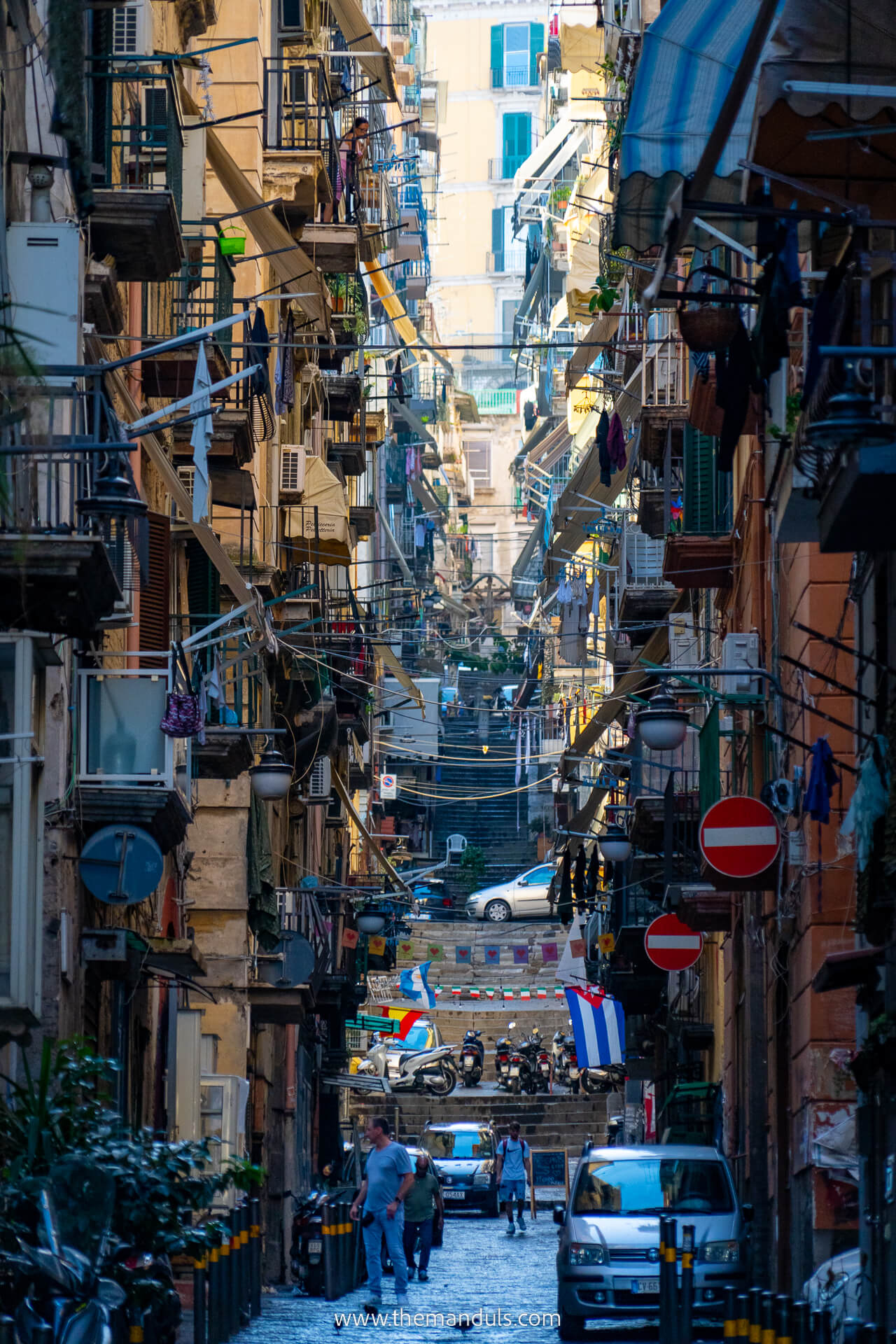
Key Highlights
🌦️ Seasons: Mild Mediterranean climate with hot summers and cool, wetter winters.
🌤️ Best months: May–June and September–October — warm, sunny, and great for day trips.
👥 Crowds: Busy in July–August, quiet and cheaper in winter.
🎉 Events: Easter, Pizza Village (June), and Christmas markets.
💡 Tip: Book early for spring and summer — the best hotels go fast.
Quick Overview
We recommend visiting Naples between May and June or September and October. The weather is comfortably warm, perfect for exploring the city, taking day trips along the coast, or swimming in the sea.
We usually try to avoid the summer months — coming right before or after has saved us quite a bit on accommodation and car rental, and there are noticeably fewer crowds.
In a hurry?
These are our top hotels in Naples we’d book again
⭐️⭐️⭐️ Relais Della Porta (Our Top Pick) – Set inside a beautifully restored palazzo, this luxury stay combines classic frescoed ceilings with modern comfort.
👉 See prices & availability →
⭐️⭐️ Gallery Experience Napoli – A stylish mid-range option in the Historic Centre with bright modern rooms, spa baths, and excellent value.
👉 See prices & availability →
⭐️ B&B La Movida – A friendly, affordable guesthouse in Chiaia surrounded by cafés and local restaurants, just a short walk from the seafront.
👉 See prices & availability →
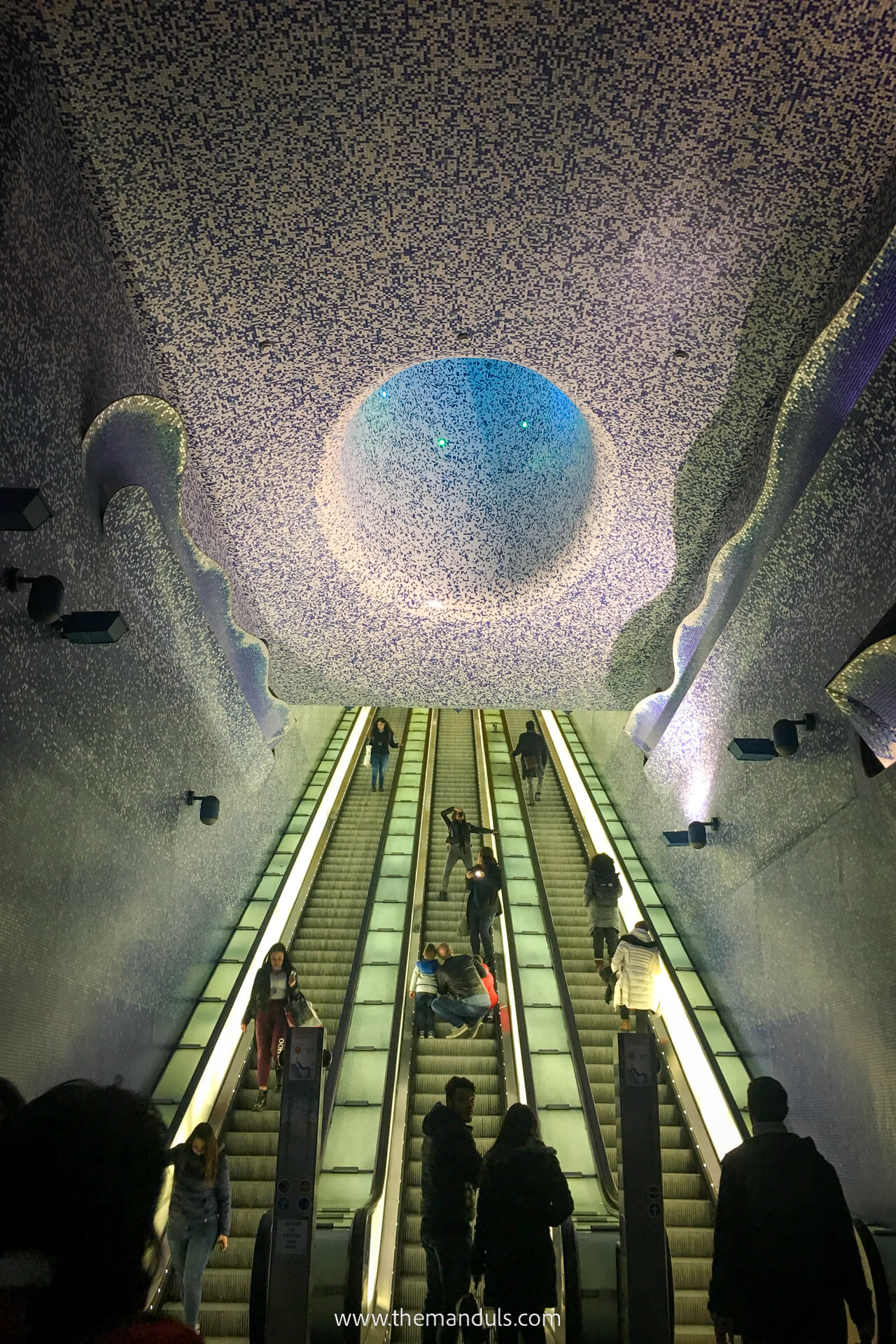
Our Experience
As we mentioned earlier, Nika first visited Naples in February — before we met — and she still says it was one of her favorite trips. Hotel prices were incredibly low, and most attractions were almost empty. The only downside was the cooler weather — not ideal for swimming, and she had to pack a few extra layers.
When we visited together later in August, it felt like a different city. There were plenty of people around, hotels were pricier, but the long evenings and warm sea made up for it.
We could explore more during the day and spend lazy afternoons swimming and sunbathing. Some attractions were packed, but that’s part of visiting in peak season.
After both experiences, we agreed that the sweet spot is right before or after summer. It’s the same pattern we’ve seen all across Europe — like in Albania, where visiting in late May instead of July saved us almost three times on car rental and accommodation, and the weather was still perfect for the beach.
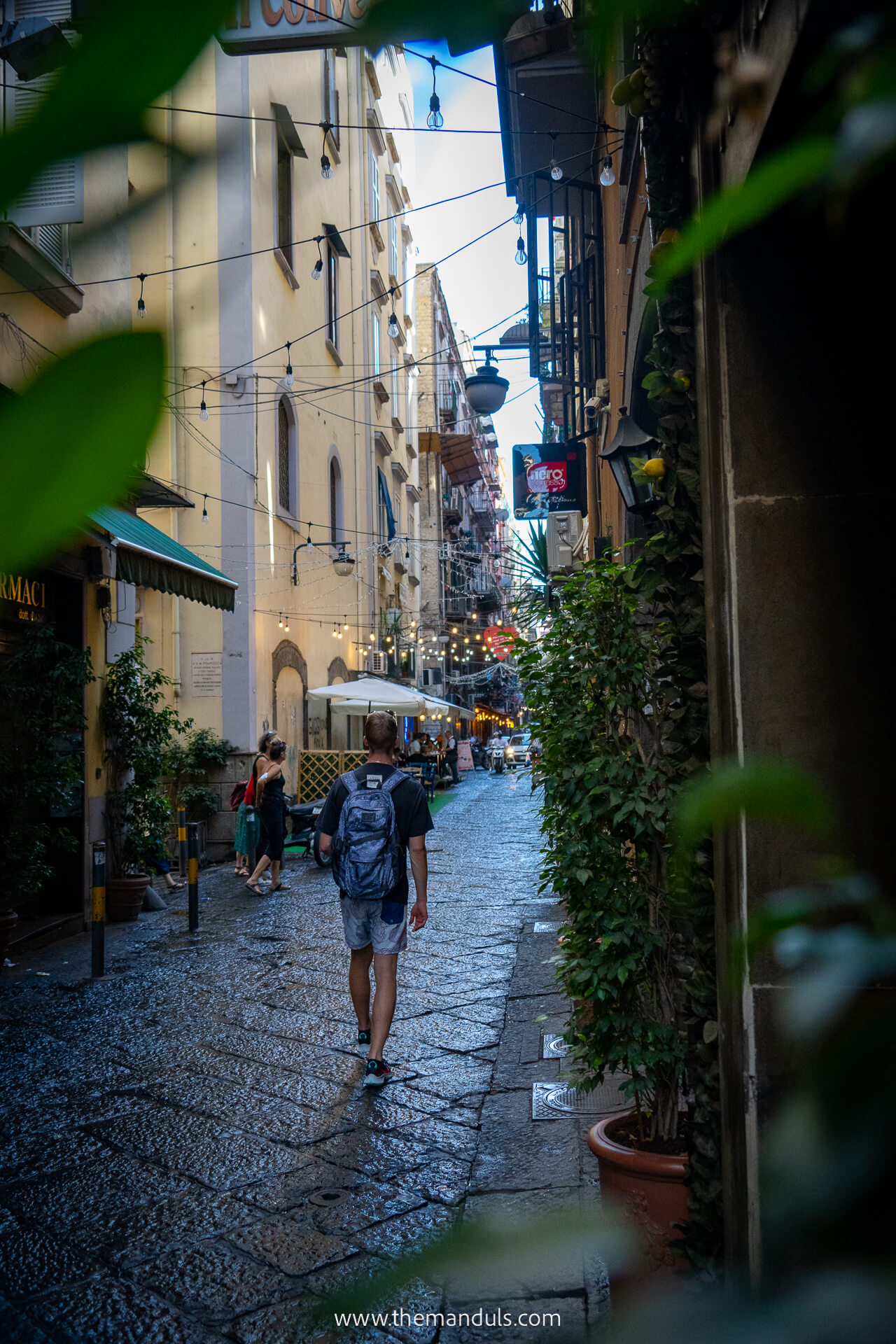
Best Time to Visit Naples
Naples changes a lot with the seasons — from chilly, quiet winters to long, vibrant summer days. Based on our visits and travel across southern Europe, the months between April and June and September to October offer the best mix of weather, prices, and atmosphere. Below, we’ve broken down what each season actually feels like.
Spring (March – May)
Spring is when Naples really wakes up. Days get longer, temperatures usually sit between 15–27 °C, with mild humidity and just enough rain to keep the city fresh. It’s that sweet balance — warm enough to explore comfortably but not yet hot enough to sweat all day.
There are no crowds, which makes sightseeing feel relaxed. You can still walk into restaurants without booking, and hotels haven’t hit their summer prices yet. It’s an ideal time for sightseeing, photography, and day trips to Pompeii & Mount Vesuvius or the Amalfi Coast, when everything feels alive but not overwhelming.
If we had to pick one month to visit, it would definitely be late May — long days, warm evenings, and the sea finally pleasant enough for a quick swim. This is the time when Naples shows its best side.
✅ Pros: Comfortable weather, manageable crowds, lower prices.
❌ Cons: Occasional rain, sea can still be cool early in the season.
Monthly overview:
- March: Mild and quiet, perfect for sightseeing.
- April: Lively but not packed, great for food and local atmosphere.
- May: Early summer vibe — long days, warm sea, perfect balance overall.
Average temperatures: Between 15 and 27 °C
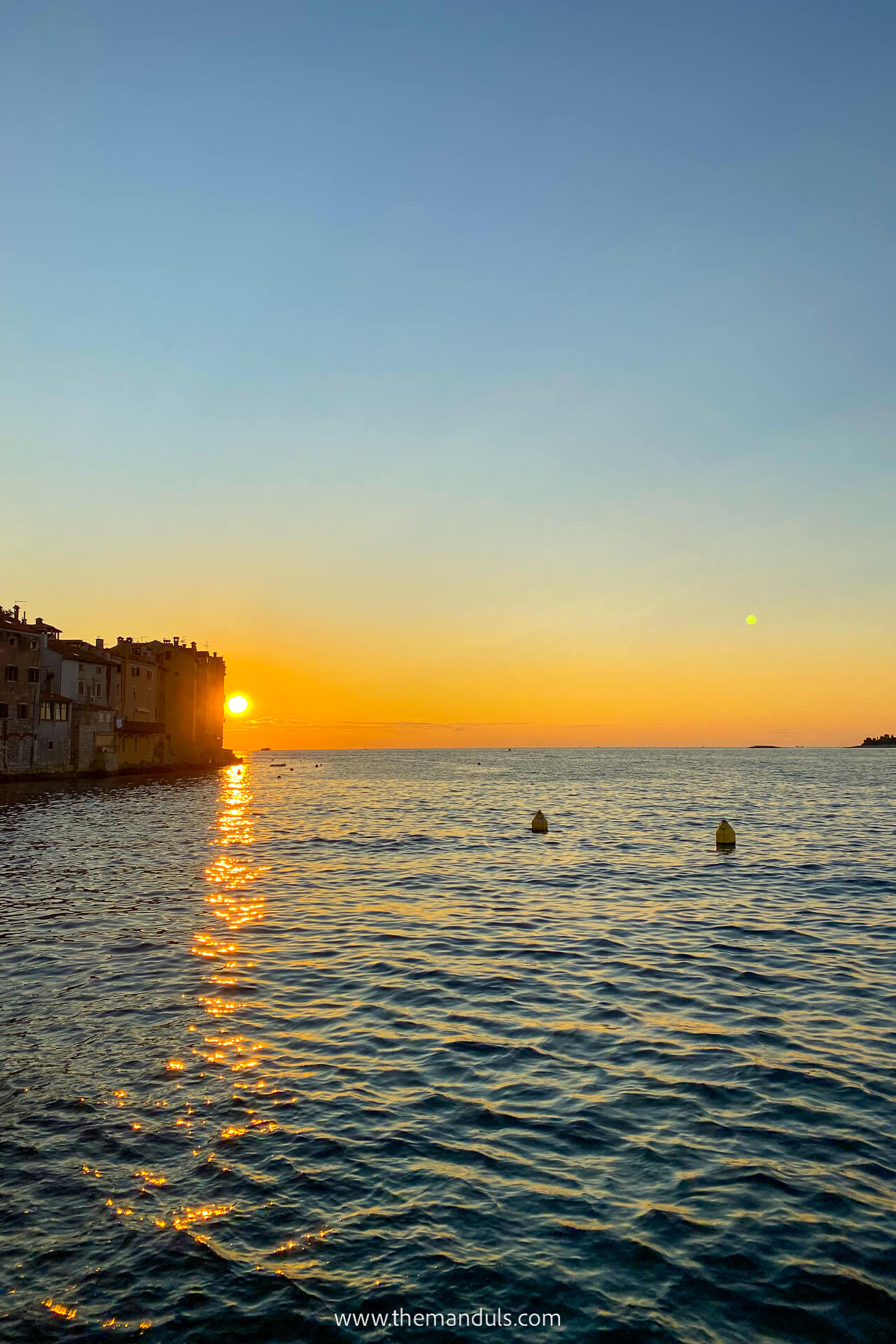
Summer (June – August)
Summer in Naples is vibrant and full of energy — but also the hottest and busiest time of year. Temperatures often climb between 27–36 °C. Evenings stay warm, and daylight lasts until almost 9 pm, making it easy to spend hours outside enjoying late dinners or strolling by the waterfront.
We visited in late August, and while the city was packed, we still loved having long days for sightseeing and swimming. Planning early starts and taking lunch breaks helped us make the most of it without burning out in the heat.
This is peak season, so expect crowds everywhere — from the historic center to ferries heading to Capri or the Amalfi Coast. Prices for hotels, ferries, and car rentals are at their highest, and you’ll need to book early. Still, there’s something special about experiencing Naples when it’s at full speed.
If you want to enjoy a mix of sightseeing with beach days and the city’s loud, lively energy, this is your time to go.
✅ Pros: Long sunny days, warm sea, festive atmosphere.
❌ Cons: High prices, heavy crowds, and intense midday heat.
Monthly overview:
- June: Warm but manageable — great before peak crowds.
- July: Hottest month, crowded but full of life.
- August: Locals on holiday; chaotic atmosphere and hot.
Average temperature: Around 27–36 °C, with strong sun, little rain, and long daylight — perfect for swimming but tough for all-day sightseeing.

Autumn (September – November)
Autumn is one of the best times to visit Naples. The summer heat fades, the sea stays warm, and the city finally slows down. Temperatures range between 18–28 °C, with clear skies in September and a bit more rain toward November.
It’s still bright and pleasant enough for day trips, but cool enough to enjoy walking through the city without constantly looking for shade.
We’ve found that mid to late September is the sweet spot — crowds thin out, the sea is perfect for swimming but prices are almost the same as in summer. If you want to save on hotels and rentals we recommend going in October or November but keep in mind that daylight is shorter and temperatures lower.
Autumn suits travelers who want to see Naples less crowded, but still experience a pleasent weather especielly in September and early October.
✅ Pros: Warm weather, fewer crowds, better hotel deals later in the season.
❌ Cons: Occasional rain and shorter daylight hours by November.
Monthly overview:
- September: Sunny, warm sea, fewer crowds at the end of the month.
- October: Cooler, calmer, and more affordable — great for sightseeing.
- November: Noticeably quieter, some rain, and perfect for cultural trips.
Average temperature: Around 18–28 °C, with plenty of sunshine in September and mild evenings through October.

Winter (December – February)
Winter in Naples is mild compared to most of Europe, with temperatures usually between 8–16 °C. You’ll get short daylight hours and more rain, but also quiet streets, lower prices, and a completely different atmosphere. This is when the city feels local again — morning markets full of residents, and no crowds at major sights.
Nika visited in February, and it turned out to be a great time for sightseeing. Everything was open, there were hardly any queues, and prices for accommodation were among the cheapest she’s ever seen in Italy. The only trade-off was cooler weather and the need for an extra layer, but it was worth it for the peace and slower pace.
Winter suits travelers who want to explore without crowds, focus on food and culture, and save money on flights and hotels.
✅ Pros: Quiet, cheap, authentic local vibe.
❌ Cons: Cooler temperatures, shorter days, and occasional rain.
Monthly overview:
- December: Festive lights, Christmas markets, and mild weather.
- January: Coldest month, great for budget travelers.
- February: Calm and cheap, good for sightseeing and day trips.
Average temperature: Around 8–16 °C, with cooler evenings but generally pleasant daytime conditions for exploring.
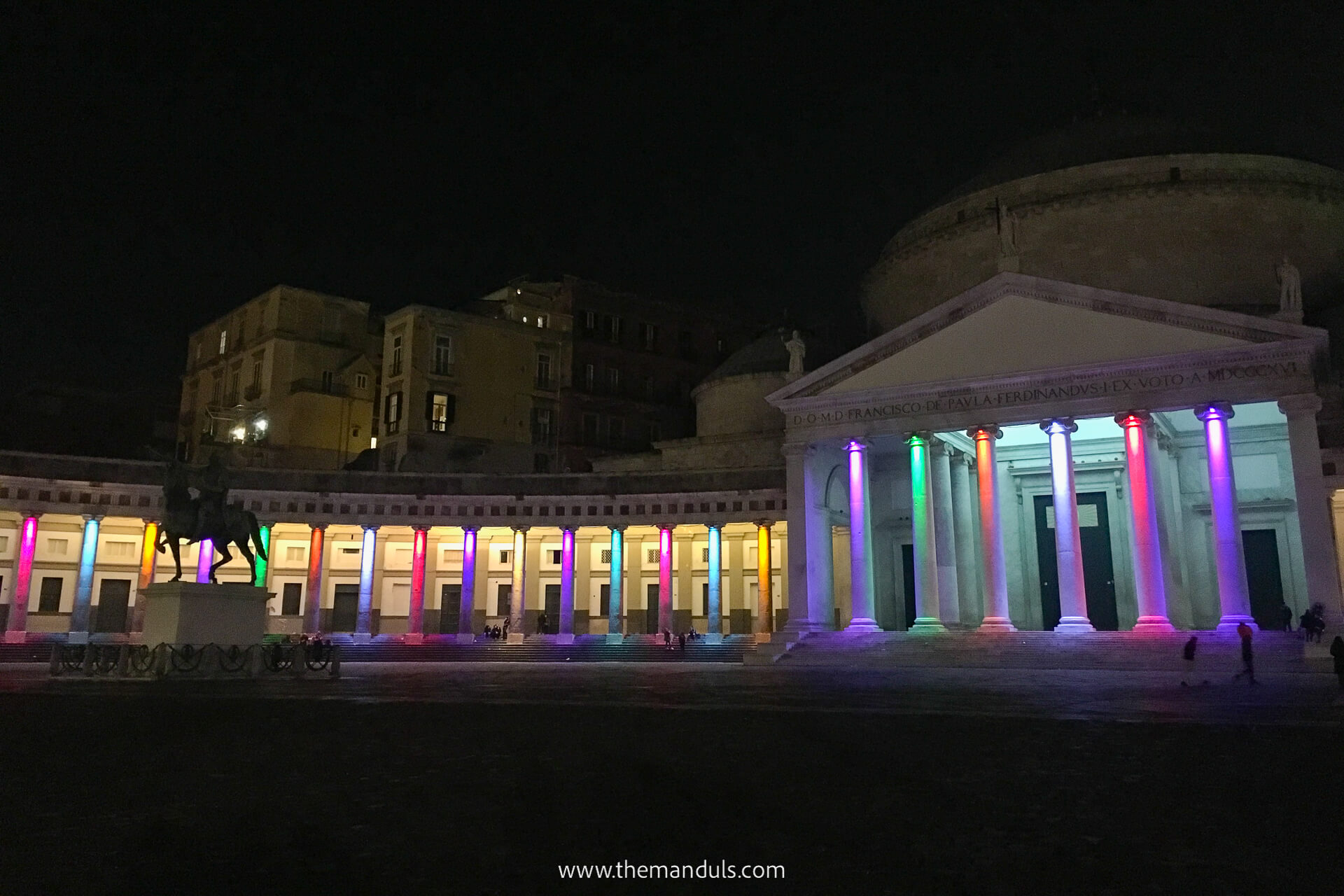
Crowds & PricesCrowds & Prices
Crowds in Naples follow a clear pattern — June to August is the busiest period, when both locals and international visitors fill the city and coastal areas. Prices for hotels, tours, and car rentals peak during these months, and good places often sell out months in advance.
If you’re after good value, May and late September and mid-October are the best times to visit. You’ll still get warm weather, but accommodation and rental prices drop noticeably compared to summer. In winter, prices hit their lowest, and you can find central hotels for half of their summer rates.
From our experience, booking hotels early for July and August helps a lot — prices rise fast and the best rooms disappear quickly. On the other hand, in shoulder months, you should be able to book last minute without any issue.

Events & Festivals
Naples has events running almost year-round, but a few stand out and can easily shape your trip.
- Easter Week (March or April): One of the most important celebrations in southern Italy, with religious processions, music, and street food filling the city center.
- Pizza Village (June): A massive open-air pizza festival held along the waterfront — great energy, live music, and endless pizza tasting.
- San Gennaro Festival (September): Dedicated to Naples’ patron saint, featuring parades, markets, and traditional food around the cathedral.
- Christmas Markets (December): Streets around Via San Gregorio Armeno turn magical with nativity scenes and handmade decorations.
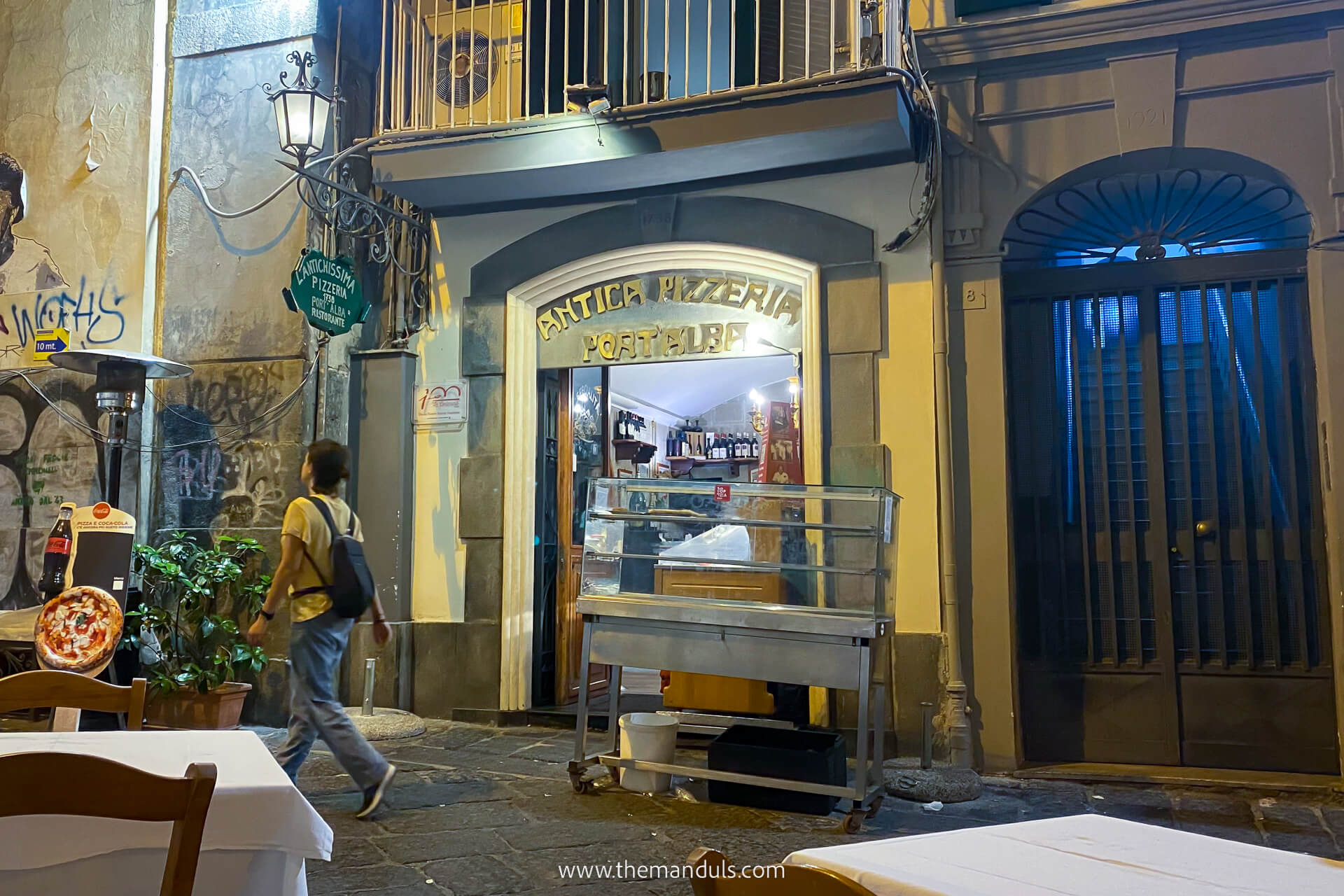
Worst Time to Visit Naples
There isn’t really a bad time to visit Naples, but some periods are harder than others. July and August are the toughest months — temperatures often climb above 33 °C, and popular attractions stay crowded all day. It’s also when hotels and rentals reach their highest prices.
On the other hand, January and early February can feel quiet and grey, with shorter days and occasional rain. It’s still great for sightseeing and food, but not ideal if you’re hoping for lively outdoor life or coastal trips.
When we visited in late August, we learned quickly that timing matters — starting early and avoiding midday heat made all the difference. If you’d rather skip both extremes, we highly recommend visiting in May or late September, which gives you a far better balance between weather, crowds, and prices.
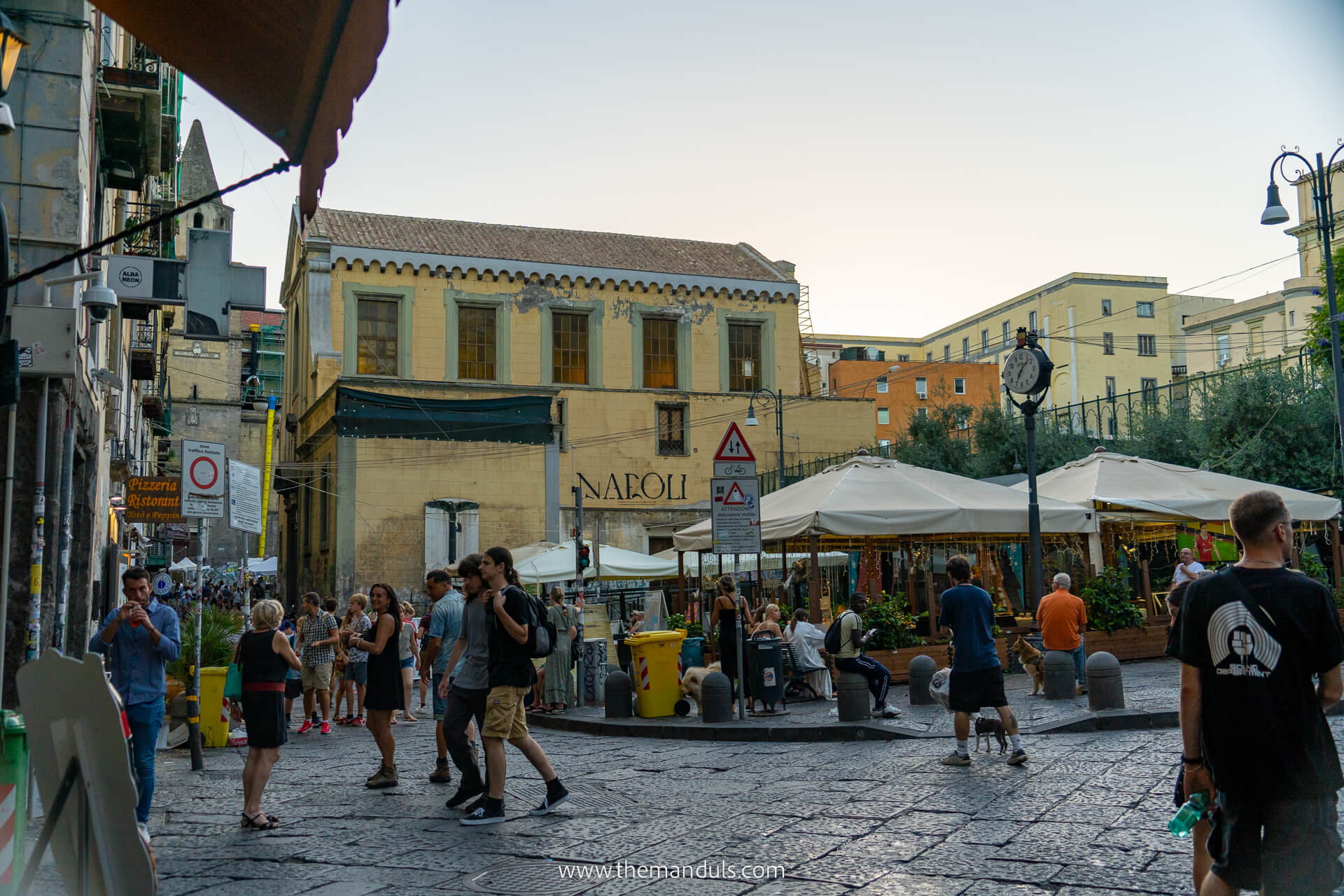
FAQ
Rain is most common between November and February, but it rarely lasts all day. Spring and autumn usually have light showers that pass quickly.
We’d say May or September — warm, long days without the heavy crowds or heat. You can comfortably explore all the main sights and still enjoy time by the coast.
Definitely January to March. Hotels, flights, and car rentals are at their lowest, and many attractions are almost empty.
Yes — by late May and throughout September, the sea is warm enough for swimming, and beaches are open.
If you’re planning to visit between June and August, book at least two months or three ahead. In spring and autumn, a couple of weeks in advance is usually enough.
Final Thoughts
Looking back, timing really changed how we experienced the city (more Nika than me since she visited twice). From quiet winter mornings to long summer nights by the sea, each season felt completely different.
After trying both extremes, we’d still choose late spring or early autumn every time — the balance of warmth, light, and atmosphere just feels right.
We’ve learned that planning around the seasons isn’t just about weather — it’s about how the city moves, how locals live, and how much you actually get to enjoy it. If you time it well, it can turn a good trip into a truly memorable one.

